Due to size constraints on a custom PCB, I have opted out for using the smallest type of electrolytic capacitors (3 mm diameter.) However, capacitors in such a small diameter are almost impossible to find.
If I remember my high school books correctly , tantalum caps are actually a type of electrolytic capacitors just with different purpose and their size to capacitance ratio is much better than the electrolytic ones.
I know that they have other advantages, but my biggest concern is is it possible to just use tantalum capacitors instead of ordinary electrolytic capacitors? The circuit in mind is just an ordinary amplifier for an electret microphone using a simple LM386.
Edit : Here is the schematic, I am asking for all the electrolytic capacitors.
